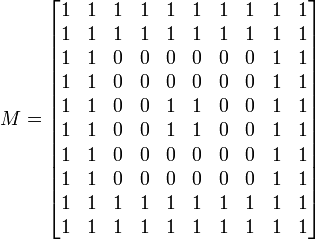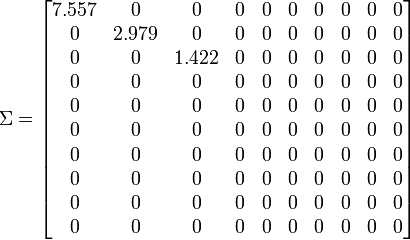Signal Processing/Image Editing
< Signal ProcessingAs an image is a type of 2-D signal; instead of just time-amplitude pairs that correspond to a voice transmission, consider "time in the X domain"-"time in the Y domain"-amplitude pairs. That is, an X coordinate, a Y coordinate and an amplitude. This will give you a monochromatic image. As such, signal processing tools can be used in editing images.
Singular Value Decomposition
The Singular Value Decomposition is a matrix decomposition (another way to say factorization).
where
- U is an m×m unitary matrix over.
- Σ is an m×n diagonal matrix with nonnegative real numbers s_{n,n} on the diagonal where
- V*, an n×n unitary matrix. V* is the conjugate transpose (take the complex conjugate of all entries, and then perform a transpose operation on the matrix) of V.
The diagonal entries Σi,i of Σ are known as the singular values of M.
Image Compression
The nature of the singular values Σ is such that for a certain k,
In order to transmit a 10x10 monochromatic image with 2 values ("on" or "off") it would require a matrix that has 10x10 = 100 entries. Consider the following image.

This image can be represented by the following matrix.
The singular value decomposition of which is
Where
Using the matrix
And corresponding "truncated" versions of U and V* (Use only the first three columns of U and the first three columns of V*), we can find that
A cursory examination of the previous matrix will show that M_{sm} is approximately equal to M. Note that the truncated version of U and V* use 3*10 numbers each. The total number of values needed for this type of storage is 2*30+3 = 63. Which means data usage is reduced by nearly half.







